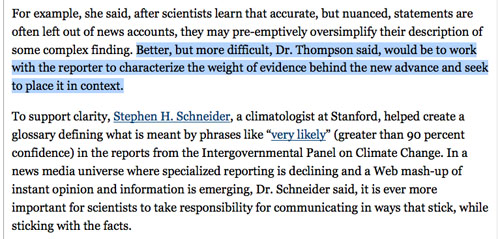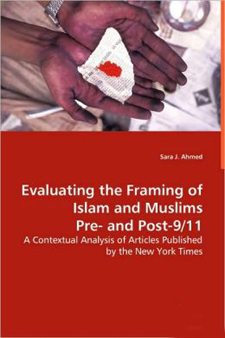Evaluating the Framing of Islam and Muslims Pre- and Post-9/11:
A Contextual Analysis of Articles Published by the New York Times
Abstract:
Media plays an integral role in forming public perceptions on matters of all dimension, varying from small, entertainment tidbits to wide-ranging world affairs. This research examines how the New York Times framed the keywords “Muslim” and “Islam” before and after the 9/11 attacks. Qualitative and quantitative content analyses were used to evaluate articles published 30-days before and after 9/11/2001. The objectives of this research were to explore media depictions and framing techniques employed by the New York Times along with analyzing and comparing descriptive text surrounding the words Islam and Muslim.
* Who’s Afraid of Post-Blackness? What It Means to Be Black Now — note how the writer weaves sources and examples throughout: quoting, delivering statistics, wrestling with contradictions, integrating a range of voices, all in the service of a single line of inquiry.
* “Do Birds Have Emotions?”
“Emotions, feelings, awareness, sentience, and consciousness are all difficult concepts. They are tricky to define in ourselves, so is it any wonder they are difficult in birds and other nonhuman animals? Consciousness is one of the big remaining questions in science, making it both an exciting and a highly contentious area of research.”
You can see the writer’s contextual-analysis map: “Biologists, psychologists, and philosophers have argued over these issues for years, so I cannot hope to resolve them. Instead, I have adopted Darwin’s approach—thinking about what might be going on in a bird’s head and imagining a continuum, with displeasure and pain at one end and pleasure and rewards at the other.
- Sample: The Contextual Effects of Race on White Voter Behavior: The 1989 New York City Mayoral Election
- Sample: “No day shall erase you from the memory of time” (Op-Ed) and Letter
- Sample: Evaluating the Framing of Islam and Muslims Pre- and Post-9/11: A Contextual Analysis of Articles Published by the New York Times
- Sample: Who Survives on Death Row?: An Individual and Contextual Analysis (PDF)




